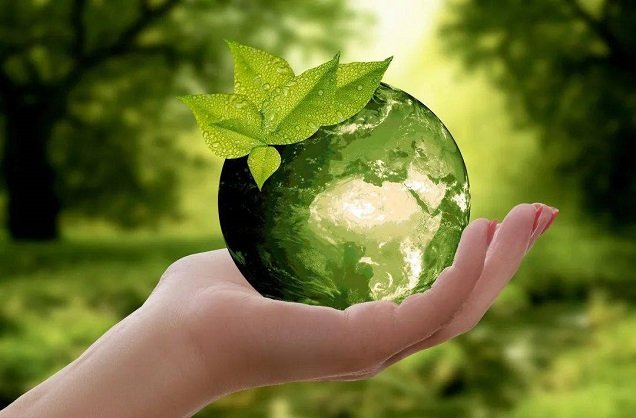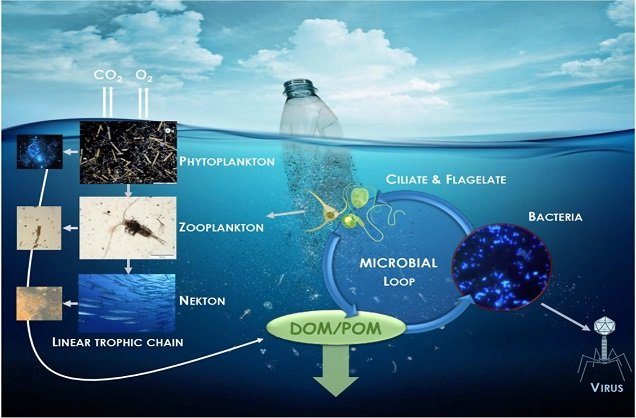When “biodegradable” is abused, what does it really mean?
With the environmental problems caused by plastic waste in the spotlight, the exploration of alternative materials for plastic bags and packaging continues to heat up, with bio-based packaging and biodegradable materials such as polylactic acid (PLA) in the spotlight.
The concept of “biodegradable” has become popular because of the urgent need to solve the plastic pollution dilemma, and this type of material is regarded as an important path to solve the problem. So what exactly are biodegradable materials? How can they help pollution control through product applications?

1、Degradable materials
Degradable materials refer to a class of materials that can meet the requirements of applicability during the use and preservation period, but can undergo chemical structure changes in a relatively short period of time after use under specific environmental conditions, losing the use of material properties. Degradable materials are categorized into ordinary degradable materials and biodegradable materials. Biodegradable materials refer to degradable materials that can be converted into carbon dioxide and water within 180 days through the action of microorganisms under composting conditions.
The first type of photo-oxidized plastics is ordinary petroleum-based plastics, adding some additives that can act with sunlight and cause breakage of the molecular chain of petroleum-based plastics, so that they can be turned into plastic fragments under the action of light. This kind of degradation has relatively big defects: firstly, photodegradation can't really realize the degradation, secondly, it degraded into the plastic fragments, the residue in the environment has a very serious impact on plants and microorganisms, and it also produces microplastics.
The second type of bioplastics is called destructive biodegradable plastics. These destructive biodegradable plastics are made by adding natural substances, such as starch, wheat flour, rice flour or bamboo fiber, which have a natural appearance, to traditional plastics to achieve the so-called biodegradation. Although the natural substances can be degraded, the remaining part of the plastic is still plastic. Therefore, this type of destructive bioplastic is not a fully biodegradable plastic.

2、Compostable Biodegradable Materials
True biodegradable materials must be compostable. Those that can be degraded by wind, sun and rain under the action of sunlight are not true biodegradable materials. By definition, a truly degradable material must be one that is completely converted to carbon dioxide and water under composting conditions by microbial action within 180 days.
Compostable biodegradable materials are divided into two categories, bio-based compostable materials and petroleum-based compostable materials. Bio-based compostable materials are subdivided into materials that come directly from plants, such as those from paper pulp, polylactic acid (PLA), aliphatic polyesters (PHA), and blends of natural substances with the two types of polymers mentioned above. Petroleum-based compostable materials, derived from petroleum, such as polybutylene terephthalate (PBAT), polyethylene glycol (PCL), and so on.
Compostable biodegradable materials also have drawbacks, as they are dependent on composting facilities, and the optimal conditions are 60°C (40°C-80°C are fine) and 90% humidity for rapid degradation. However, in natural environments it takes at least a few years to degrade, although eventually it can still be fully degraded. Under low temperatures, drought or inactive microorganisms, degradation takes even longer.
3 、Application of Compostable Biodegradable Materials
Compostable materials have been widely recognized by some governments in Europe and the United States. For example, in California, New York, Seattle, and San Francisco, compostable materials have been an important way to successfully implement zero-waste programs. California law (SB-567) also prohibits “the sale of plastic packaging and plastic products with biodegradable, degradable or decomposable labels” to avoid misunderstanding or intentional misrepresentation by the heap market.
The use of compostable plastics makes it more valuable to recycle bio-waste separately, helping to convert more organic waste from landfills. In some European countries, such as the Netherlands and Germany, which have better composting facilities, legislation has also been enacted to require food waste to be composted. As far as I know, there are more than 400 composting sites in Germany, and it is entirely feasible for them to implement compostable plastics.

4、Biodegradation of Polylactic Acid and its Sources
Is composting the only way to dispose of a compostable material such as polylactic acid? What if there are no composting sites and composting facilities? In fact, there are other ways to dispose of compostable materials besides composting, such as combustion. Compared to plastics, the products of complete combustion of PLA are carbon dioxide and water, which do not pollute. It can also be landfilled. Although the degradation rate is slower, at least it does not pollute groundwater, destroy plant growth, or waste arable land. Of course there is also the possibility of recycling, but the cost of recycling is relatively high.
5、Applications of PLA
One of the better known applications of PLA is paper cups. Paper cups have a layer of film, the traditional paper cups with PE film, now the United States from Seattle Starbucks, has been replaced by PE film PLA film, and the cup cover is now basically made of PLA material.
Polylactic acid in addition to disposable products, but also do some other products, such as daily necessities, China has a relatively well-known brand “Valley of the home”, made of polylactic acid daily necessities, made of daily necessities is not for degradation, is the use of polylactic acid materials, high food safety. Polylactic acid materials can also be used in fibers, silk scarves, tea packaging, diapers, film, window film and other different uses.

 Significant progress in PBAT/s
Significant progress in PBAT/s
 PLA/PBAT composite film degrad
PLA/PBAT composite film degrad
 A New Choice for Takeaway Pack
A New Choice for Takeaway Pack
 Significant progress in PBAT+s
Significant progress in PBAT+s
CONTACT
Add: Room 4006, No.1 Helong Yiheng Road, Baiyun District, Guangzhou City
Tel: +8613450255948
Wechat : +86-13450255948
Fax: +86-13450255948
E-mail: 13450255948@163.com








